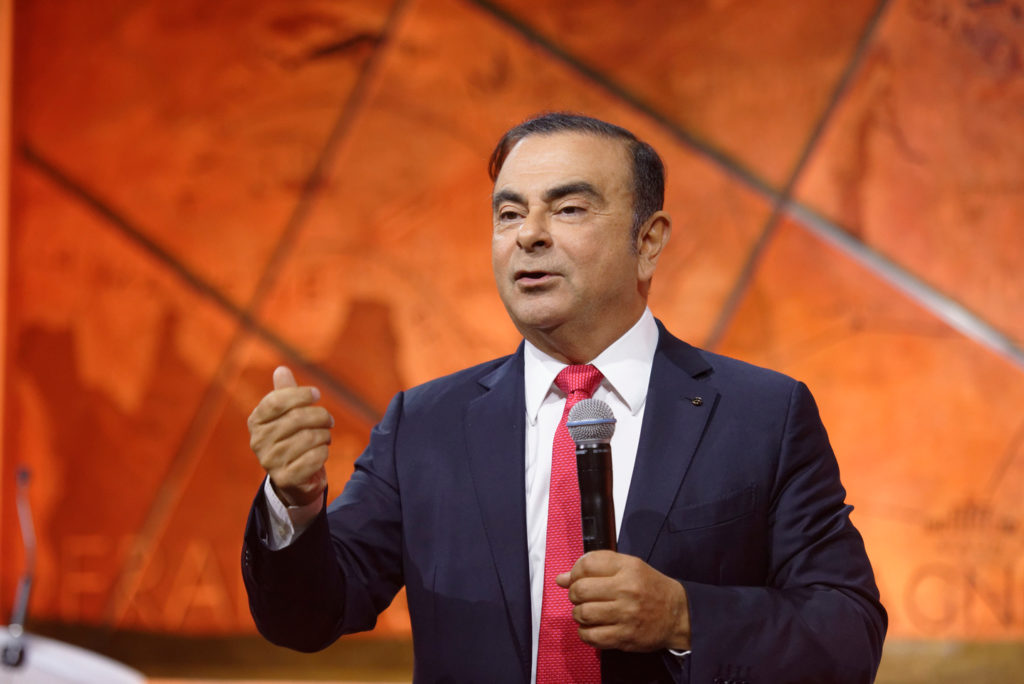

The overall U.S. and global auto markets were relatively stagnant in 2018 in terms of sales levels, as a decade-long boom softened up. But beneath the surface, major transitions were taking place that will continue to reshape the industry in 2019 and beyond.
Here are 10 of those transitions:
Turning over at the top: This was a transformative year for automotive CEOs, with significant transitions for a number of reasons. Michael Manley took over at Fiat Chrysler after the sudden death of Sergio Marchionne, for instance, while leadership of the Nissan-Renault alliance remains uncertain as Carlos Ghosn sits in a Tokyo jail after his arrest on financial charges. Regulators forced the mercurial Elon Musk to give up power at Tesla. Volkswagen’s leadership has been convulsed by fallout from Dieselgate.
Getting ahead of the game: General Motors CEO Mary Barra sent chills through Detroit, Washington and auto factories across the land by announcing the upcoming closure of five North American plants and the elimination of thousands of jobs as she tries to position GM for a slowdown that will come eventually – and so that GM can stop making sedans that now see little demand including the Chevrolet Impala and Volt, and the nearly new Cadillac CT6.
Dealing with Trump: For three years now, automotive CEOs have been in the cross-hairs of the president, who praises them when they commit to expansion of U.S. manufacturing and jobs – and who flogs them via twitter and otherwise when he doesn’t like what they’re doing to American factories and employment. Expect the dance to continue in 2019.
Grappling with trade impacts: The renegotiation of the North American free-trade agreement involving the United States, Canada and Mexico ended up better than some automotive CEOs had feared, not forcing much disruption in their supply chains. But Trump’s tariffs on European steel and aluminum, and on many things coming out of China, will keep CEOs on their toes in 2019.
Reckoning with China: Every automotive CEO globally had to make big decisions about investments in China over the last several years, and just about all of them jumped in with both feet to expand production and distribution there. But now that once-torrid growth in the Chinese consumer market and auto sales has cooled off, CEOs’ decisions are being tested as never before.
Rushing to utility vehicles: Consumers in America and abroad showed no slowing in their major shift in preferences toward sport-utility vehicles and crossovers and away from traditional sedans. Practically all new models now are utility vehicles and performance versions of sedans, with gas sippers and other traditional car forms falling out of favor.
Figuring out EVs: This year saw the introduction of more new all-electric vehicles and American consumers greeting them with a collective yawn. As long as gasoline prices remain quiescent and EVs can’t promise dramatically improved range, nothing the regulators do to force the industry and the market toward electric power will work.
Hedging on sales momentum: The U.S. market will enter a remarkable fourth year in 2019 at around a 17-million annual run rate, providing an unusually soft landing for the industry after a strong decade. Plus, the majority of vehicles sold now are high-profit pickup trucks and utility vehicles. The question is whether some sort of bottom will fall out next year.
Joining forces: Many, including the late Marchionne, have believed that the global auto industry will have to consolidate because of overcapacity and the tremendous costs involved in transitioning their fleets to EVs and driverless cars. Some of that consolidation may be taking place in 2019, as Ford and Volkswagen, for example, have confirmed that they’ve been talking on various types of hookups.
Progressing toward driverless cars: Unfortunate accidents have put speed bumps in the way of the driverless future, but automakers and Silicon Valley continue to inch closer in pursuing various visions of that new era. Expect business-to-business applications of automated driving – such as Kroger’s newly announced delivery experiment in Arizona – to lead the way in 2019.




0

1:00 - 5:00 pm
Over 70% of Executives Surveyed Agree: Many Strategic Planning Efforts Lack Systematic Approach Tips for Enhancing Your Strategic Planning Process
Executives expressed frustration with their current strategic planning process. Issues include:
Steve Rutan and Denise Harrison have put together an afternoon workshop that will provide the tools you need to address these concerns. They have worked with hundreds of executives to develop a systematic approach that will enable your team to make better decisions during strategic planning. Steve and Denise will walk you through exercises for prioritizing your lists and steps that will reset and reinvigorate your process. This will be a hands-on workshop that will enable you to think about your business as you use the tools that are being presented. If you are ready for a Strategic Planning tune-up, select this workshop in your registration form. The additional fee of $695 will be added to your total.

2:00 - 5:00 pm
Female leaders face the same issues all leaders do, but they often face additional challenges too. In this peer session, we will facilitate a discussion of best practices and how to overcome common barriers to help women leaders be more effective within and outside their organizations.
Limited space available.

10:30 - 5:00 pm
General’s Retreat at Hermitage Golf Course
Sponsored by UBS
General’s Retreat, built in 1986 with architect Gary Roger Baird, has been voted the “Best Golf Course in Nashville” and is a “must play” when visiting the Nashville, Tennessee area. With the beautiful setting along the Cumberland River, golfers of all capabilities will thoroughly enjoy the golf, scenery and hospitality.
The golf outing fee includes transportation to and from the hotel, greens/cart fees, use of practice facilities, and boxed lunch. The bus will leave the hotel at 10:30 am for a noon shotgun start and return to the hotel after the cocktail reception following the completion of the round.